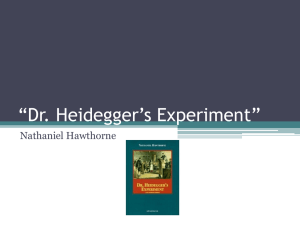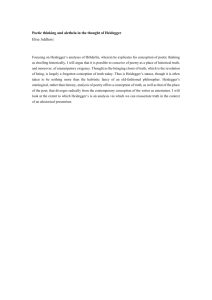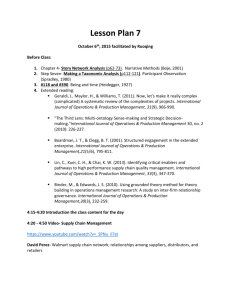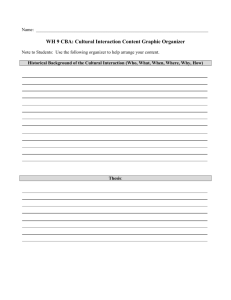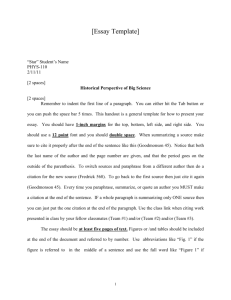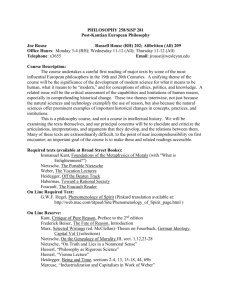Literary Analysis Essay
advertisement
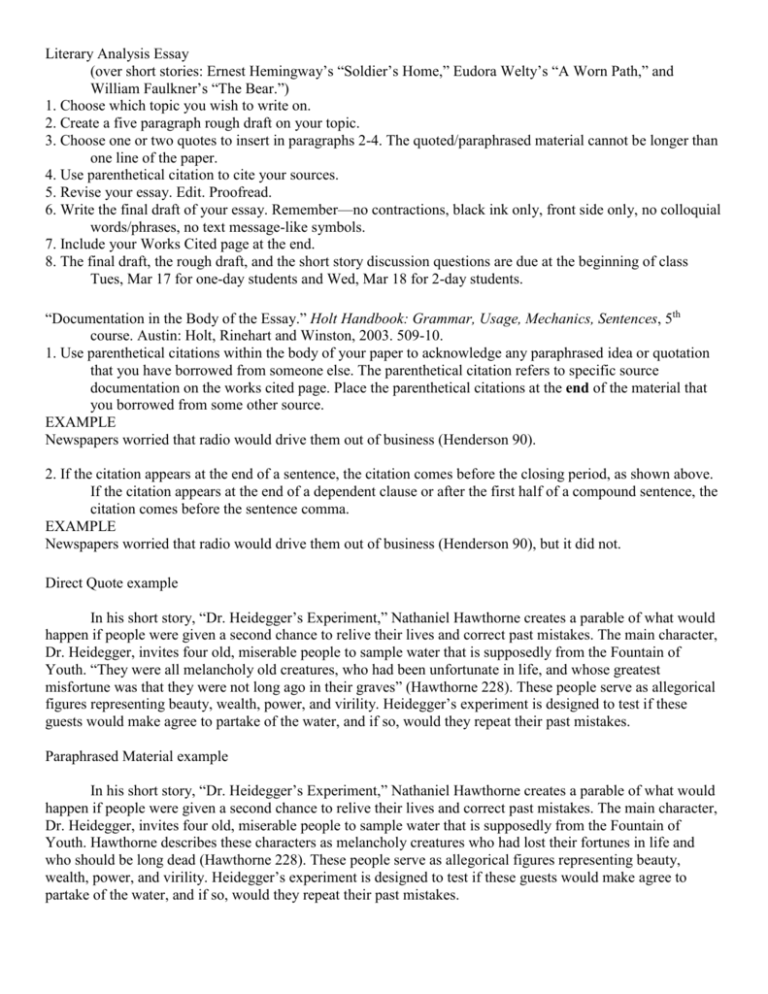
Literary Analysis Essay (over short stories: Ernest Hemingway’s “Soldier’s Home,” Eudora Welty’s “A Worn Path,” and William Faulkner’s “The Bear.”) 1. Choose which topic you wish to write on. 2. Create a five paragraph rough draft on your topic. 3. Choose one or two quotes to insert in paragraphs 2-4. The quoted/paraphrased material cannot be longer than one line of the paper. 4. Use parenthetical citation to cite your sources. 5. Revise your essay. Edit. Proofread. 6. Write the final draft of your essay. Remember—no contractions, black ink only, front side only, no colloquial words/phrases, no text message-like symbols. 7. Include your Works Cited page at the end. 8. The final draft, the rough draft, and the short story discussion questions are due at the beginning of class Tues, Mar 17 for one-day students and Wed, Mar 18 for 2-day students. “Documentation in the Body of the Essay.” Holt Handbook: Grammar, Usage, Mechanics, Sentences, 5th course. Austin: Holt, Rinehart and Winston, 2003. 509-10. 1. Use parenthetical citations within the body of your paper to acknowledge any paraphrased idea or quotation that you have borrowed from someone else. The parenthetical citation refers to specific source documentation on the works cited page. Place the parenthetical citations at the end of the material that you borrowed from some other source. EXAMPLE Newspapers worried that radio would drive them out of business (Henderson 90). 2. If the citation appears at the end of a sentence, the citation comes before the closing period, as shown above. If the citation appears at the end of a dependent clause or after the first half of a compound sentence, the citation comes before the sentence comma. EXAMPLE Newspapers worried that radio would drive them out of business (Henderson 90), but it did not. Direct Quote example In his short story, “Dr. Heidegger’s Experiment,” Nathaniel Hawthorne creates a parable of what would happen if people were given a second chance to relive their lives and correct past mistakes. The main character, Dr. Heidegger, invites four old, miserable people to sample water that is supposedly from the Fountain of Youth. “They were all melancholy old creatures, who had been unfortunate in life, and whose greatest misfortune was that they were not long ago in their graves” (Hawthorne 228). These people serve as allegorical figures representing beauty, wealth, power, and virility. Heidegger’s experiment is designed to test if these guests would make agree to partake of the water, and if so, would they repeat their past mistakes. Paraphrased Material example In his short story, “Dr. Heidegger’s Experiment,” Nathaniel Hawthorne creates a parable of what would happen if people were given a second chance to relive their lives and correct past mistakes. The main character, Dr. Heidegger, invites four old, miserable people to sample water that is supposedly from the Fountain of Youth. Hawthorne describes these characters as melancholy creatures who had lost their fortunes in life and who should be long dead (Hawthorne 228). These people serve as allegorical figures representing beauty, wealth, power, and virility. Heidegger’s experiment is designed to test if these guests would make agree to partake of the water, and if so, would they repeat their past mistakes.
